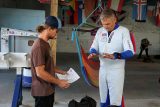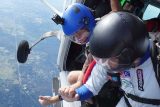You Want to Become a USPA Coach … Now What?
Coach Courses
Posted by: Skydive Ratings
8 years ago
In the August 2016 issue of USPA’s magazine “Parachutist” is an article by us, about what it takes to become a USPA Coach:
So, you have decided that you want to become a USPA Coach? What a great goal! With a Coach rating you get to give back to the sport that you love so much. You get to pass on your knowledge, experience and passion to new skydivers. The course is a great experience because it touches on so many topics and gives you a new perspective on the sport … the perspective of a teacher!
Let’s start with the rating requirements. To enter a USPA Coach Course you need to:
- Hold a USPA B license
- Have made a minimum of 100 skydives
- Have received a signature on section two of the Coach Rating Course Proficiency Card
You must actually hold a USPA B license to attend a course. Course candidates who may be planning to eventually apply for their C licenses while skipping their B-licenses sometimes show up with their B-license applications in hand to show that they are B qualified. However, those people are technically still A-license holders and may not take the course. Actually holding a USPA B license or higher is the key here.
Coach candidates generally fall into two categories: Those who are highly motivated to become a Coach and would like to perform Coach duties, and those who want to take an Instructor Rating Course but know that holding a USPA Coach rating is a prerequisite. Either way, both groups want to work with students, and that is exactly what the course is about!
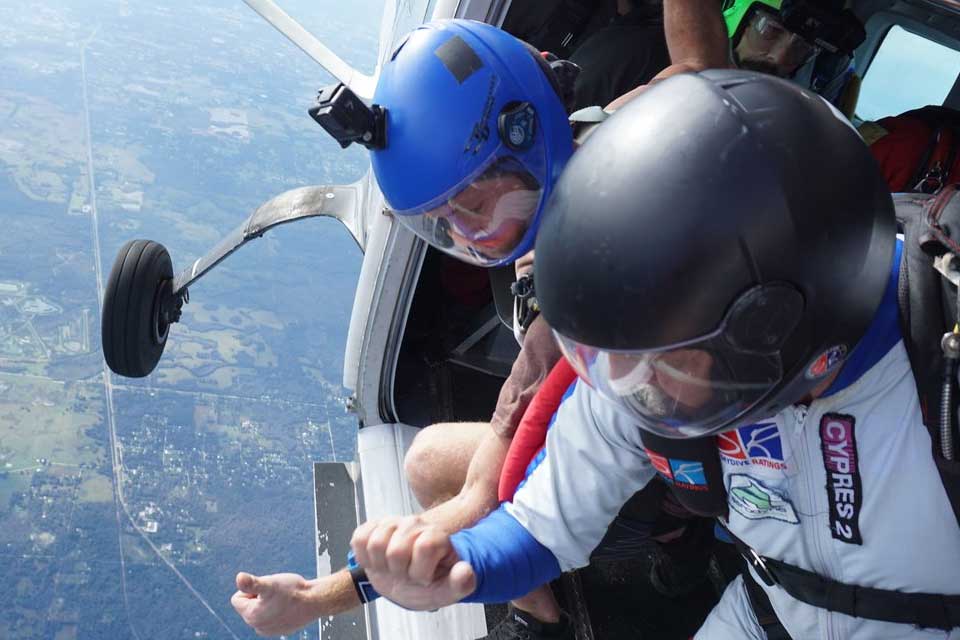
The Importance of Coaches at the Drop Zone
Members of today’s generation want to learn, and they want to do it now. Offering a good coaching program might well be the best marketing tool any skydiving center can have: “You can learn to actually skydive-not just save your life-in 25 jumps!”
Coached jumps are a very important part of the student program. Anything students learn during AFF and coached jumps will go to waste if they start making only solo jumps soon after. Without any reference and feedback they won’t do much more than “make a hole in the sky,” and too many solo jumps usually turn bad body positions into habits. A constructive coaching program serves as a motivator for students and newly licensed skydivers to stay in the sport, and it gives them the skills necessary to jump safely with others. The coached jumps required by USPA’s Integrated Student Program only cover the basics. Drop zones can develop coaching programs-or use existing ones-to teach more advanced belly flying, beginning freeflying, canopy piloting and just about anything else.
So, What Do I Learn in a Coach Course?
The course starts with several general topics such as the privileges of the Coach rating, the rating requirements and how to keep your rating current. You’ll learn about rules, regulations and liability (As an instructional rating holder, you must follow the USPA Basic Safety Requirements and Federal Aviation Regulations, as well as have knowledge of USPA’s safety recommendations.) You’ll also learn about the resources available to you. For instance, Coach candidates take a closer look at the ISP and learn where they can find information to use when teaching.
The core of the course is the General Teaching Methods section, which teaches you how to instruct skydiving in the most efficient way. It covers the principles of teaching motor skills, helps candidates understand how people learn new motor skills and explains what plays a role in the learning process. Practically, you’ll learn to use a basic structure in your lesson plans and how to apply the whole-part-whole principle, which will make learning simpler for your students. You’ll become familiar with the positive effect of cue words during practical training and learn how to use training aids effectively. You’ll use this knowledge when teaching new skydiving skills during the pre-jump ground briefing, as well as in the first-jump class.
What Does a Coach Have to Do With the First-Jump Class?
A USPA Coach may teach the general portions of a solo first-jump class (the word “solo” meaning a method in which the student wears solo skydiving equipment as opposed to tandem equipment).
The general portions of the first-jump class are:
- Equipment orientation
- Basic body position (arch)
- Canopy-piloting skills
- Canopy problems and malfunctions
Part of the USPA Coach Course is learning about these topics and how to teach them. During your ground evaluations in the course, you will actually teach two of these topics while applying the teaching principles you learned in class the day before.
Coach Jumps
The most obvious task of a USPA Coach is making Coach jumps! Once an Instructor clears a student for freefall self-supervision, a Coach may jump with that student. During the course, you will learn what this involves. For instance, how do you brief your student for the tasks in freefall and under canopy? Are there any emergency procedures you need to review? Is there any new information that you need to teach?
The course will teach you where you can find information for the student’s briefing. You’ll also learn how to perform student equipment checks and how to supervise your student from the time you are on a 20-minute call until the time you fill out the student’s logbook and A-License Proficiency Card.
What Must I Do to Prepare for the Course?
Every candidate needs to have a current Skydiver’s Information Manual and Instructional Rating Manual to attend any USPA Instructional Rating Course, including the Coach Course. You can download the SIM at no cost and purchase hardcopies of the SIM and IRM at uspa.org. Additionally, attendees need to have the two prerequisites listed on the Coach Rating Course Proficiency Card (available in the IRM and at uspa.org/downloads) signed off prior to the course. The first prerequisite is to take the open-book written exam found in the IRM. You must bring the completed exam with you to the course. The Coach Examiner will grade it, and you must pass with a score of 80 percent or higher. The second is to have an instructor certify that you assisted with a complete solo first-jump class. This ensures that you’ll understand what it’s like to teach rather than take a first-jump class, and will also serve as a refresher on what instructors teach in the class. The signature is good for the 12 months prior to the course date.
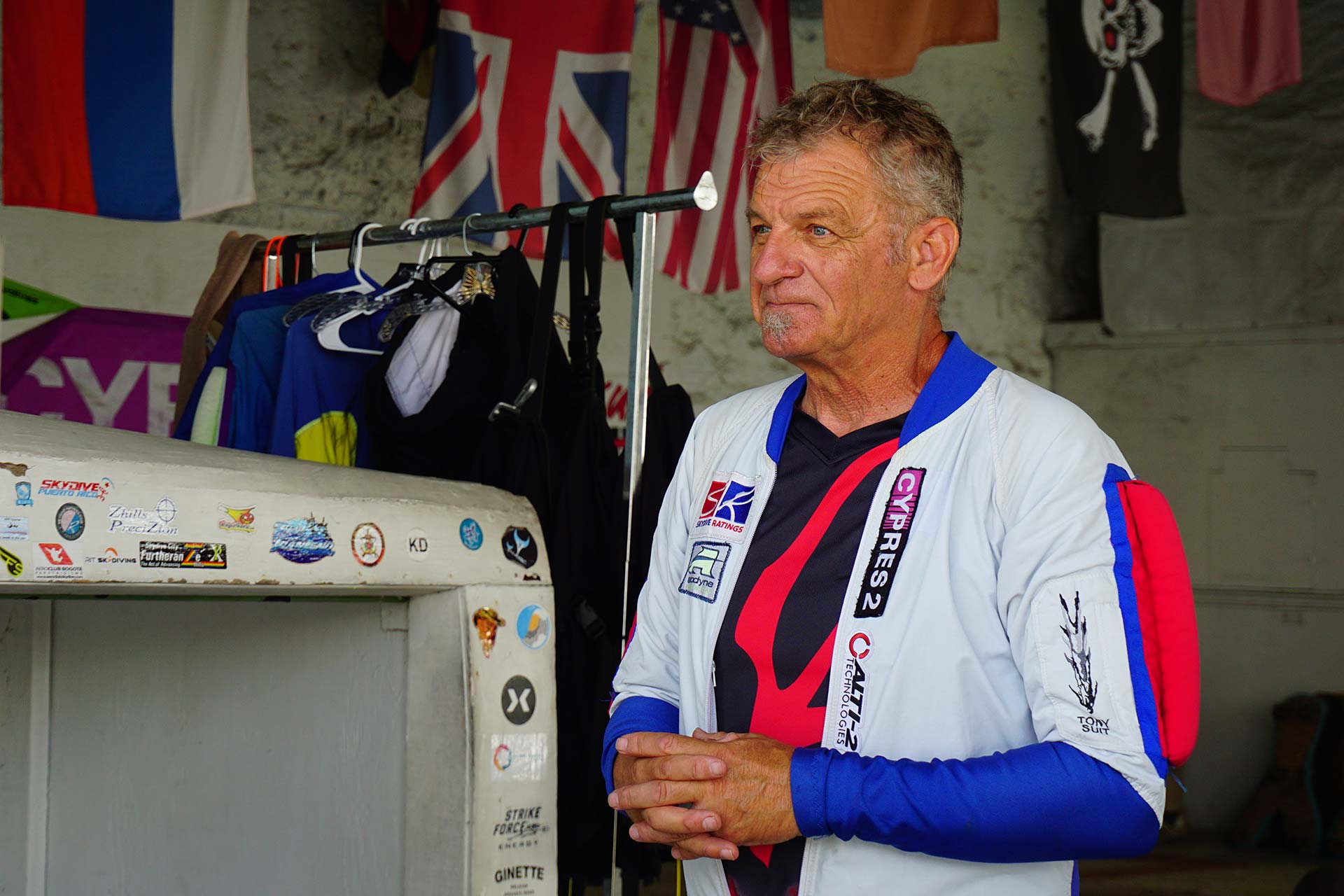
At What Point Am I a Coach?
After you finish the Coach Rating Course and have obtained signatures for all the items on the proficiency card, you must send that card to USPA. It is fairly simple with today’s technology to scan a document and email it. There are even apps that allow you to do this straight from your phone. Send the card to USPA with the rating fee payment information filled out. The proficiency card will serve as your rating card for 30 days. USPA will send you a new membership card with the Coach endorsement on it. Be proactive! Make sure that you or the rating school immediately sends in a copy of the card (a professional rating school will most likely take care of this for you) and that you leave the course with your proficiency card in hand! Keep the original card for your own records, at least until USPA issues your Coach rating and you receive your endorsed membership card.
Instructor Supervision
The IRM clearly states that a Coach works under the supervision of an Instructor. This means that the Instructor should make sure the Coach does a good job training the student and that the student is ready to make the planned jump. It also means that the Instructor should be available to answer the Coach’s questions and give advice. In the real world, this can be tough.
At most drop zones, Instructors are running around making sure that all of their students are getting in the air. Especially on busy summer days, they won’t be looking for their Coaches to find out how they’re doing with the students. You’ll need to be proactive to get the supervision that you need. Ideally, each coach will have a mentor Instructor to turn to, so try to partner up with one of the instructors and build a mentor-mentee relationship. Sometimes the drop zone operator will fulfill this important task. The Coach rating is a rating to learn!
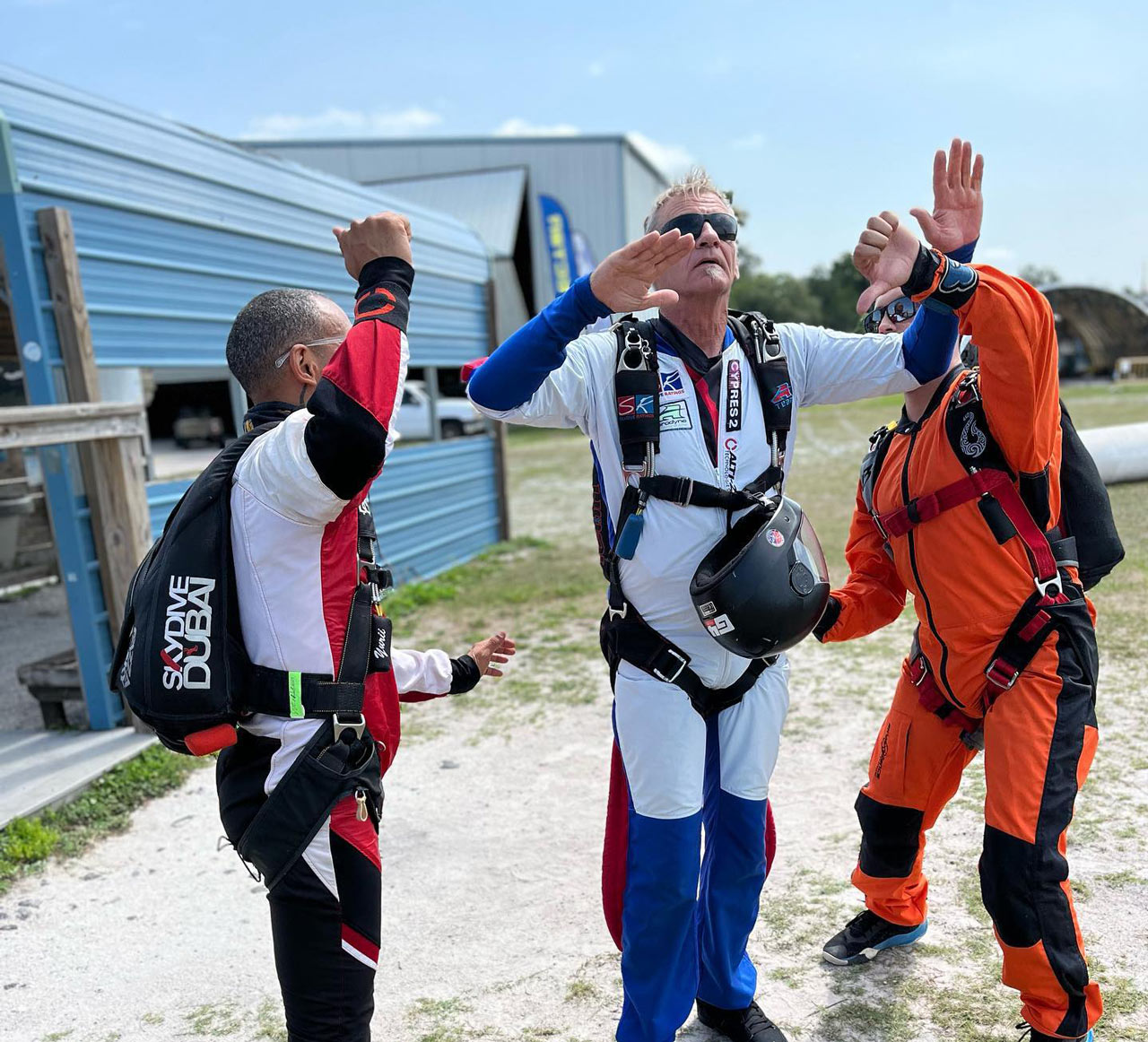
Keeping the Rating Current
To keep your rating current, a USPA Instructor, Instructor Examiner, Coach Examiner, Safety and Training Advisor or member of the USPA Board of Directors needs to sign for your rating annually on the USPA Membership and Rating Renewal Application. This certifies that you have met the requirements (made a minimum of 15 Coach jumps, assisted with at least one full first-jump class and attended a rating renewal seminar).
If you need to renew your membership shortly after taking the Coach Rating Course, you still need to obtain the signatures in the rating renewal block, even though you just got the rating. Remember to do this, because you would hate to no longer have the Coach endorsement on your membership card! Always make it a habit to look carefully at your new membership card after you renew each year to make sure your ratings are listed correctly.
The Coach Rating Course is a great experience and it contains lots of valuable information. It truly is a strong platform for any other instructional rating. Even longtime Instructor Examiners find that they use the course’s teaching principles regularly in their lesson plans. If you follow the teaching methods outlined in the course, you will be a good teacher. Teaching is a creative process. You will learn from every class, topic and skydive that you instruct. You’ll learn from your students’ feedback. You will learn from your mistakes; you will learn from your mentor Instructor; you will become more proficient every time you teach. Keep an open mind, and love the process.
